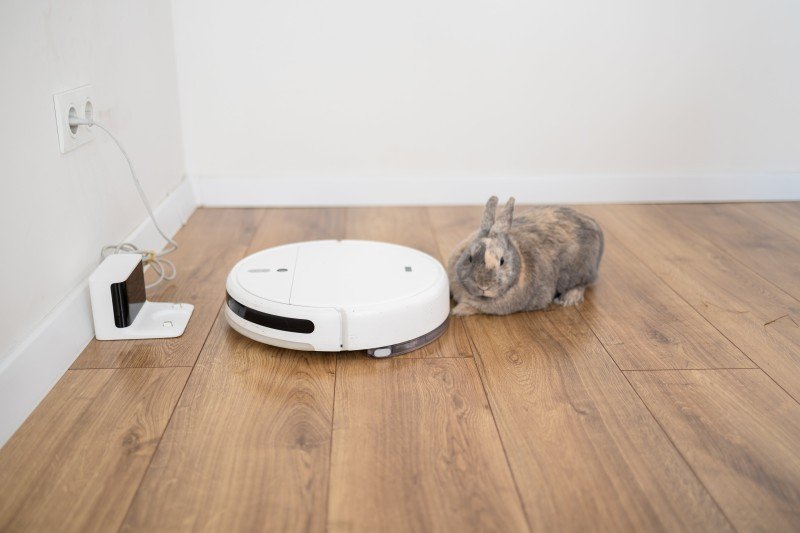Why You Should Concentrate On Enhancing Robotic Vacuum
The Rise of the Robotic Vacuum Cleaner: Revolutionizing Home Cleaning
In the realm of household appliances, robotic vacuum have actually emerged as among the most significant innovations in the last few years. These autonomous gadgets provide convenience and performance, allowing property owners to preserve cleaner living spaces without the drudgery of manual vacuuming. This post explores the advancement, performance, benefits, and factors to consider relating to robotic vacuum, together with supplying insights through information tables and regularly asked concerns.
A Brief History of Robotic Vacuum Cleaners
The journey of robotic vacuum started in the late 20th century, with early models stopping working to make considerable strides in homes. Nevertheless, improvements in technology resulted in the intro of more refined models in the early 2000s. Companies such as iRobot and Neato played an essential function in popularizing these smart home gadgets.
Advancement Timeline of Robotic Vacuum Cleaners
Year
Turning point
1996
Release of the very first robotic vacuum, the ELECTROLUX TRINITY
2002
iRobot introduces the Roomba, an extensively acknowledged model
2012
Introduction of models with innovative mapping capabilities
2020
Incorporation of synthetic intelligence for improved navigation
2023
Models with integrated clever home connection and app control
How Robotic Vacuum Cleaners Work
Robotic vacuum cleaners use a mix of sensing units, mapping technology, and synthetic intelligence to browse and clean different surfaces effectively. Here's a simplified introduction of their core functionality:
Sensors: Equipped with infrared or ultrasonic sensors, these devices can find challenges, cliffs, and dirt, enabling them to browse through rooms without crashing into furnishings or tumbling down stairs.
Navigation: Most modern robotic vacuum incorporate smart mapping innovations, enabling them to draw up the home design and enhance cleaning courses.
Cleaning Mechanism: Using brushes and suction power, robotic vacuums gather dirt, dust, and debris from different floor types, consisting of carpets and hardwood.
Charging and Cleaning Schedules: After completing a cleaning session or when their battery runs low, these robots immediately go back to their charging dock. Users can set cleaning schedules by means of mobile phone apps, assisting keep a neat home effortlessly.
Advantages of Robotic Vacuum Cleaners
Robotic vacuum cleaners offer numerous benefits over standard vacuuming methods. Here are some of the essential benefits:
- Time-Saving: Automated cleaning implies homeowners can allocate their time to other activities.
- Convenience: Scheduling cleaning sessions permits a clean home without manual intervention.
- Thorough Cleaning: Many robotic models feature specialized brushes to take on animal hair and offer deep cleaning on carpets and rugs.
- Smart Home Integration: Many systems work with clever home systems, providing voice control and remote management.
Popular Features in Robotic Vacuum Cleaners
Feature
Description
Mapping Technology
Develops a digital map of the cleaning area
Mobile App Control
Offers users the ability to start/stop or schedule cleaning sessions remotely
Self-Cleaning
Some designs have docking stations that can self-empty dust bins
Advanced Sensors
Spots dirt more successfully and navigates much better
Voice Control
Compatible with virtual assistants like Alexa and Google Assistant
Factors to consider Before Purchasing a Robotic Vacuum Cleaner
While robotic vacuum provide many benefits, prospective buyers need to think about a couple of factors before making a purchase. Here are some indicate remember:
Key Factors to Evaluate
Floor Type: Certain designs perform better on carpets while others excel on difficult floorings. Purchasers ought to pick versatile vacuums if they have blended floor covering.
Battery Life: Longer battery life enables extended cleaning sessions. Try to find models that can cover large areas without frequent recharging.
Dustbin Capacity: A larger dustbin reduces the frequency of clearing, making cleaning less labor-intensive.
Sound Level: Some models run silently, which is ideal for homes with babies or sensitive family pets.
Upkeep: Users should also evaluate the ease of maintenance, especially for filters and brushes.
Possible Drawbacks
- Rate: Robotic vacuum can be significantly more costly than conventional vacuums.
- Efficiency: While they effectively keep tidiness, they might not always match the deep cleaning effectiveness of manual vacuums.
- Challenge Navigation: Some models may deal with particular kinds of furnishings or chaotic locations, possibly leading to missed spots.
Frequently Asked Questions About Robotic Vacuum Cleaners
Q1: How frequently should I run my robotic vacuum cleaner?
A1: It usually depends upon your home. For browse around here with family pets or high foot traffic, running it daily is advantageous. In less active homes, you might find every other day suffices.
Q2: Can robotic vacuum cleaners work on carpets?
A2: Most robotic vacuums can clean carpets; nevertheless, features such as suction power and brush design can substantially affect their effectiveness on different carpet types.
Q3: Are robotic vacuum great for family pet hair?
A3: Yes, many models are particularly designed to select up pet hair and come with specialized brushes to avoid tangling.
Q4: What occurs when the vacuum lacks battery?
A4: Most robotic vacuums immediately go back to their charging dock when their battery is low, ensuring they are all set for the next cleaning session.
Q5: Can I control my robotic vacuum with my smartphone?
A5: Yes, many robotic vacuum cleaners come equipped with mobile apps that enable you to set up cleansings, monitor progress, and receive alerts.
Robotic vacuum cleaners represent a significant improvement in home-cleaning technology, combining convenience with efficiency to basically modify how homes keep tidiness. As innovations continue to emerge, these devices are ending up being significantly capable, using users not just time-saving options however also boosted cleaning experiences. As the market continues to grow, potential buyers are encouraged to weigh the functions, advantages, and factors to consider thoroughly to find the very best model customized to their unique needs. Whether it's a hectic household, a family pet lover, or someone seeking automation in their cleaning regimen, there's likely a robotic vacuum cleaner that fits the expense.
